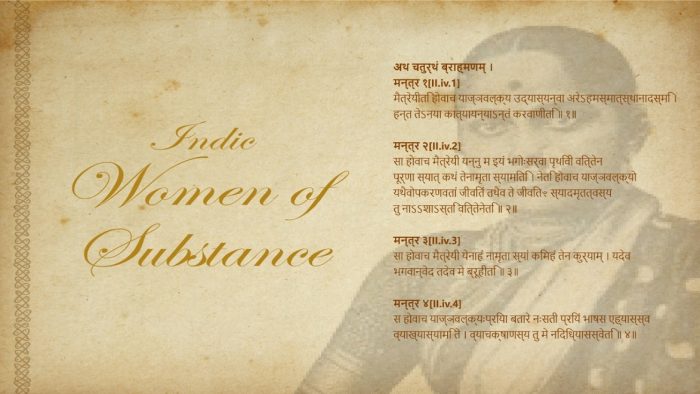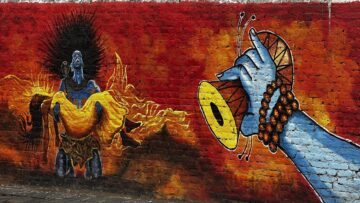Dear Indic Writers, Enthusiasts of Bharateeya Parampara
Namaste. This is a call to participate in a Creative Reimagination to bring the ethos of Bharateeya Parampara into our Modern lives. Are you inspired by our Vedic Scriptures and Epics? Are you fascinated with the characters of Ramayana, Mahabharata, Mahapuranas, and Upanishads? Are you inspired by the great women of Bharateeya Parampara? This is an exclusive opportunity for you.
As you are aware, our Scriptures and Epics – Ramayana and Mahabharata, are philosophies containing frameworks to build great societies and our individual lives. They espouse the cause of Purushartha and strive to create a Dharma consciousness in our minds. At the same time, they are civilizational encyclopedias as well. In many different forms, they store our perspective of life and intellectual thought.
The epics throw light on our ancient society in terms of social organization, social relationships, and the status of various entities in society. They have immensely shaped our civilization over centuries, both consciously and subconsciously. It is time for us to bring back that essence to our modern lives.
One may say they are not exact histories. However, that is immaterial. The thought that shaped these stories came from within the society and from lived experiences. At any rate, they were ideals that the society sought. One important aspect of this is the characterization and depiction of women. You would agree with me that the Hindu Epics present fascinating, inspiring, dynamic, and independent women.
They were women of substance. The imagination of women and the status they had in these accounts throw light on both our ancient society and the civilizational history of India. We must ensure that our future generations see them in the light of philosophy.
Roots of this dynamism lie in the philosophy of our parampara. The dynamic of the universe is represented by both Devi and Devata. In addition, our philosophy has always influenced life on the ground. We serve both an individual and social purpose that is very unique to us, bound and shaped by our Karma, depending upon our Time, Space, and Context. Hence, in our Epics, we see divine, dynamic, and marvelous women (and men). And we have seen this throughout our history. From Prabhavati Gupta to Devi Ahalyabai Holkar. In good times and troubled times, Bharatavarsha has given birth to inspiring women.
Great Women such as Kunti and Draupadi are well known. They come across as thinking, independent, knowledgeable, participating in worldly affairs including administration and warfare – and so on. We are aware of their influence on people and situations, and their role in shaping narratives. However, less known women characters of our epics are equally great. For instance, in the Udyoga Parva of Mahabharata, Sage Shandili appears as part of a small story. She teaches an important lesson to Garuda. These perspectives are unique. We must influence modern narratives through these perspectives.
However, there is a bigger problem we have to contend with. For various reasons, in the recent past, we have ended up creating completely opposite images of even well-known women from our Epics. For instance, Sati Savitri, in Mahabharata, is really a brave lady with a distinct personality of her own. She makes her own choices. I read about her as a young boy, I continue to read her story with a sense of wonder and respect. The modern world has unfortunately created a submissive version of ‘Sati Savitri’. Through rewrites and retelling, we must ensure that we see our great women in the light of our civilization and traditions.
Indic Academy is pleased to invite you to participate in this Anthology on “Indic Women of Substance”. Let your creative energies flow. Bring out stories of great women from Bharateeya, Vedas- Itihasa-Purana-Mahakavya. For the purpose of this anthology, we shall limit the stories to the Vedas, Ramayana, Mahabharata, and the 18 Maha Puranas.
We are proposing a series of anthologies on this theme covering various periods in our history.
Our Expectations from your reimagination.
- Within the context of our philosophy, the essence of our tradition, and the boundaries of the original text, you are free to use your creative liberty.
- Bring out the essence of chosen women characters from the epics that helps derive inspiration.
- Throw light on our civilization and social ecosystem that shaped such characters.
- Your stories should help us reimagine our past in the light of the principles of Sanatana Dharma. Your stories should, in turn, help us understand our tradition in greater depth and strive for continuity with our civilization.
- Your stories should initiate new conversations in our universities and society. We look forward to this Anthology being part of academic discourse in India. We hope that they influence and add to the discourse of civilizational theories, insights, and feminism.
- In summary, your stories should inject the essence of our civilizational thought into the consciousness of our readers.
- The word size of your stories should be 4000 to 8000 words.
Please note the following process for your submissions :
- Please send your submissions to namaste@indica.org.in
- The last date for your submissions is 15-Jan-2021 (extended)
- The short stories shall be selected based on the quality of writing, alignment with the larger theme of the anthology, the essence of the character brought out, and creative re-imagination (within the boundaries of their contexts in the Epics).
- The selected authors shall be invited for a workshop to hone their writing skills further.
- The authors are expected to rework their selected submissions based on the experiences of the workshop and under the guidance of the Curator
- The final Anthology shall be published along with a suitable covering note in the guiding light of the theme of the anthology.
Please pick your pen and let your creative energies flow.
Regards
Shivakumar
Consulting Editor, Indic Today
We hereby present some characters from Ramayana and Mahabharata but the authors need not limit it to them.
- Sage Shandili – Mahabharata, Udyoga Parva
- Vidula – Charioteer Sanjaya’s Mother, Udyoga Parva
- Satyavati – Mahabharata
- Maharani Kunti – Mahabharata, Multiple Parvas
- Sati Savitri – Mahabharata, Vana Parva
- Subhadra – Mahabharata, Sabha Parva and others
- Shakuntala – Mahabharata, Adi Parva
- Sharmistha – Mahabharata, Adi Parva
- Devayani – Mahabharata, Adi Parva
- Hidimba – Mahabharata, Adi Parva and others
- Tapati – Mahabharata, Adi Parva
- Pramadvara – Mahabharata, Adi Parva
- Damayanti – Mahabharata – Vana Parva
- Lopamudra – Vana Parva
- Ulupi – Sabha Parva
- Chitrangada – Sabha Parva
- Madhavi – Udyoga Parva
- Amba – Udyoga PArva and others
- Tapasvini Vriddha Kanya, daughter of Sage Kunigarga – Shalya Parva
- Tapasvini Shrutavati of Bharadwaja Parampara – Shalya Parva
- Tapasvini Arundhati – Shalya Parva
- Tara – Vali’s Wife, Ramayana
- Mandodari – Ravana’s Wife, Ramayana
- Anjana – Hanuman’s mother, Ramayana
- Devi Svayamprabha – Kishkindha Kanda, Ramayana
- Vedavathy – Uttarakanda, Ramayana
- Kausalya – Rama’s Mother, Ramayana
Note: We are a not for profit and no copyright infringement is intended
Disclaimer: The opinions expressed in this article belong to the author. Indic Today is neither responsible nor liable for the accuracy, completeness, suitability, or validity of any information in the article.





